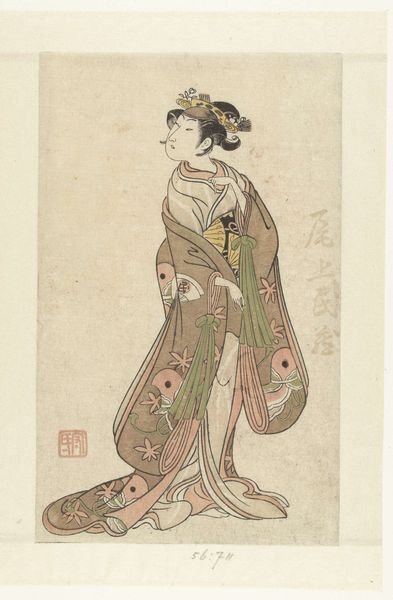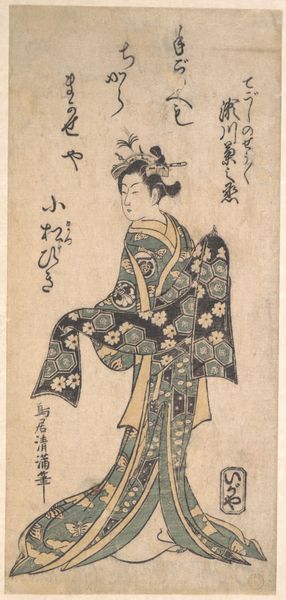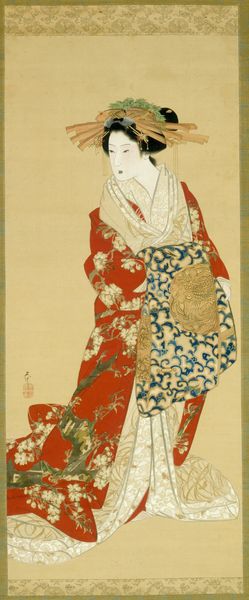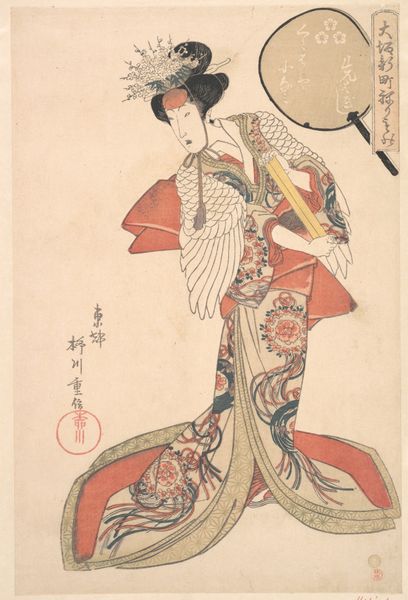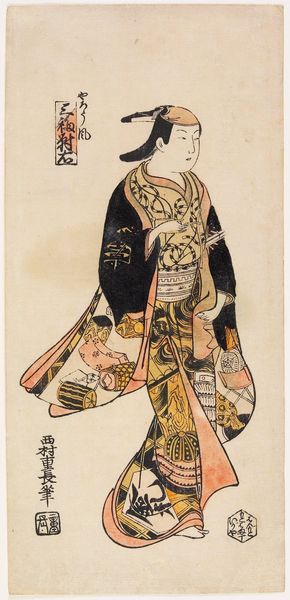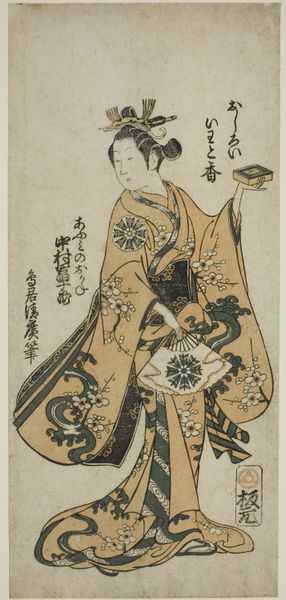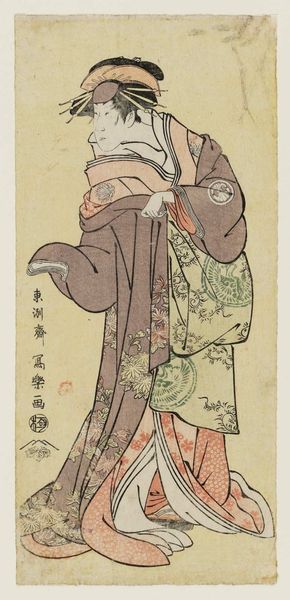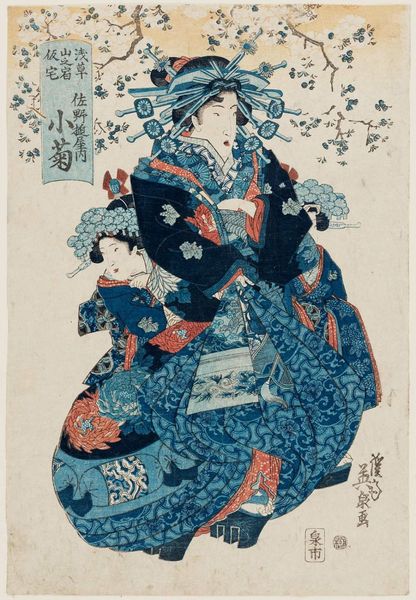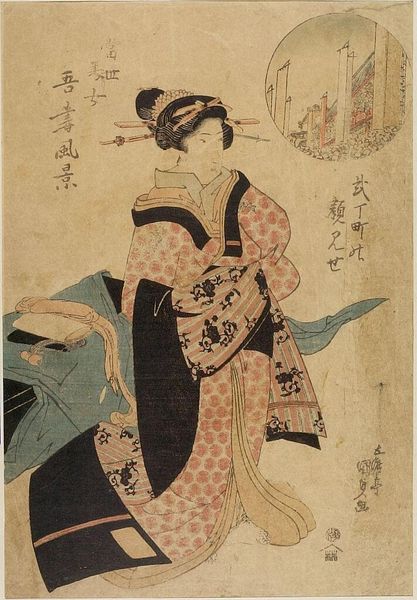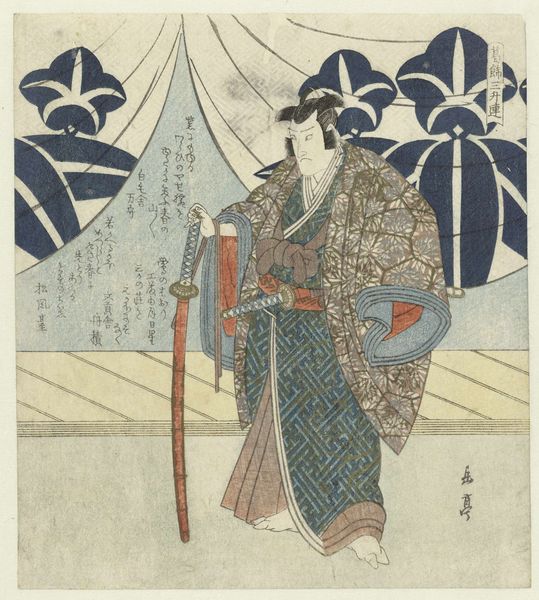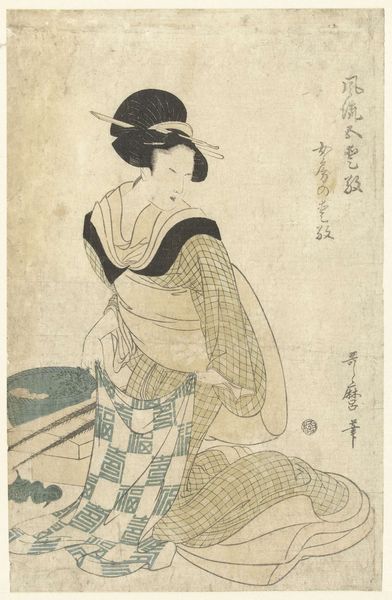
print, woodblock-print
#
portrait
# print
#
asian-art
#
ukiyo-e
#
figuration
#
woodblock-print
Dimensions: height 366 mm, width 253 mm
Copyright: Rijks Museum: Open Domain
Curator: Looking at this woodblock print, I’m immediately struck by its delicate lines. The colors are subtle, but the patterns! They create such visual richness. Editor: Yes, the way the fabrics are rendered draws your eye in, doesn’t it? We're looking at "Nakamura Matsue as Otaka," a work from 1824 by Shunbaisai Hokuei. It captures the actor Nakamura Matsue playing the role of Otaka in a kabuki drama. Curator: Hokuei was a leading artist of the Osaka school. And kabuki was incredibly popular—these prints weren’t just art, they were marketing, souvenirs, records of performances, circulated among a diverse public audience. Editor: Absolutely. See how the folds of her robe seem to defy gravity? Note the slight, almost melancholic tilt of her head, the precise arrangement of the fan... Curator: The fan hides part of her face, almost veiling her. Considering the societal constraints on women in Edo-period Japan, even on actresses, this subtle gesture could symbolize the public and private self. The prints could act like 'fan art' that built the reputation of these public figures. Editor: Interesting thought. To me, it amplifies her allure through suggestion. And this ornate garment contrasts so starkly with her barely-there expression. Curator: It makes you wonder about the politics of performance. How much agency did Matsue have in shaping her public persona? Were these prints idealized images meant to satisfy audience desires or did they grant her power in return? Editor: Either way, Hokuei masterfully captures a sense of layered reality. Curator: I see this work as a window into the social and artistic landscape of 19th century Japan. The vibrant world of kabuki is captured as well as its influence on culture and the construction of celebrity culture. Editor: It's remarkable how much we read in this, based only on lines and color. These formal elements give such texture and complexity to even what feels understated. Curator: True. The layers of analysis can bring a sense of appreciation for what the original audiences found so enthralling about it, while offering more nuanced, thought-provoking interpretations now. Editor: Precisely. Beauty is a point of entry; it opens toward endless conversation.
Comments
No comments
Be the first to comment and join the conversation on the ultimate creative platform.

